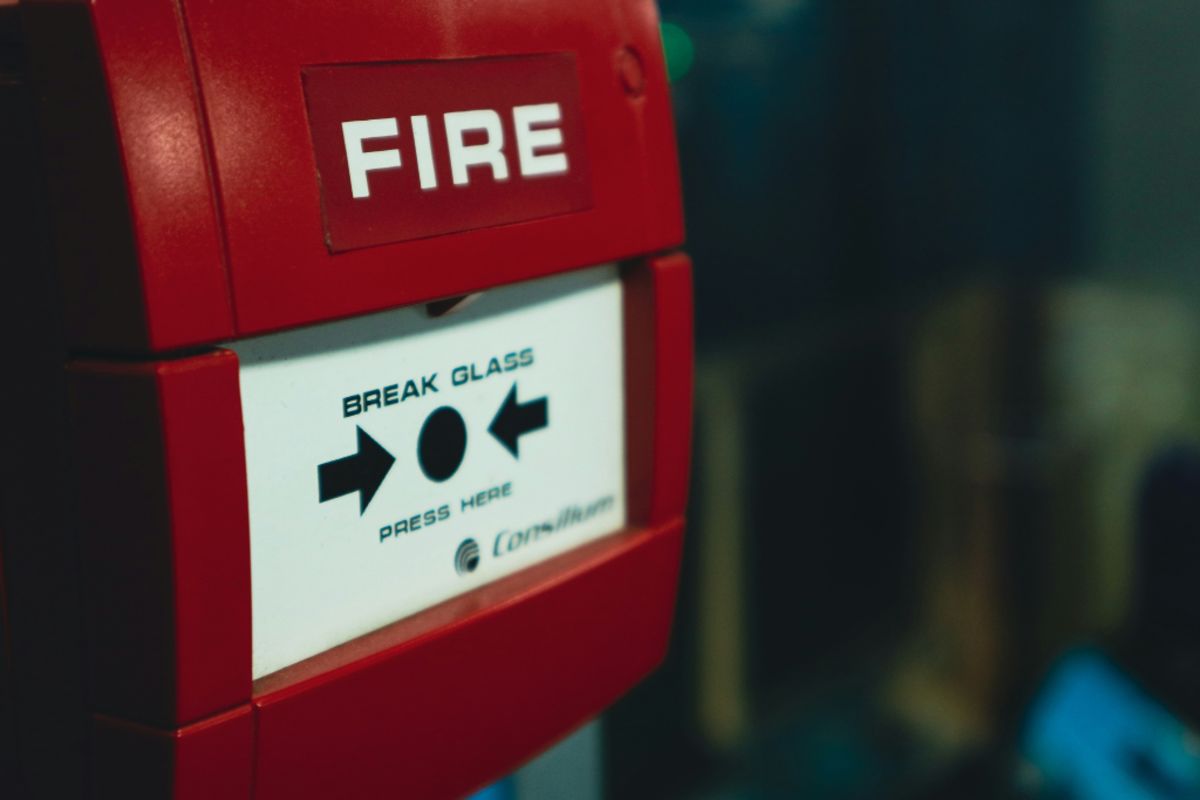
Shopping malls, retail stores, supermarkets, restaurants, and other facilities open to the public are complex spaces where the risk of fire can never be fully eliminated. The presence of electrical systems, kitchens, flammable materials, and high foot traffic makes it crucial to adopt a solid, well-structured fire protection strategy.
Unlike domestic or industrial settings, commercial venues present a dual challenge: ensuring the safety of customers and staff while maintaining a positive user experience and uninterrupted business operations. For this reason, fire protection must be addressed in a multidisciplinary way, combining technical measures, organizational planning, and staff training.
The goal is not only to extinguish a fire as quickly as possible but also to prevent it, contain its spread, and guarantee safe evacuation in an emergency. Modern strategies go far beyond fire extinguishers and smoke detectors: they now include architectural design, smart technologies, dynamic emergency plans, and continuous staff preparedness.
Risk Assessment: The First Step

There is no single global fire prevention code, but many countries share common principles, often adapted to their local context. In many cases, national regulations draw inspiration from international standards such as those of ISO (International Organization for Standardization).
In Europe, each member state of the European Union has its own national regulations, usually aligned with European directives and international standards. In the United States, fire prevention is governed by the Code of Federal Regulations (CFR), particularly in relation to construction, and by the guidelines of the Occupational Safety and Health Administration (OSHA).
In Canada, fire regulations are managed at the provincial and territorial levels, with requirements varying from one region to another. In Australia, individual states and territories establish their own rules, while the National Construction Code (NCC) provides a unified framework for design and construction.
Across Asia, regulations vary widely. Countries such as Japan have detailed and advanced fire prevention codes, while others maintain less stringent frameworks.
Despite these differences, the common international principles of fire prevention remain consistent and include:
Regular audits
Preventive measures
Training and awareness
Certification and controls
Consideration of the intended use of the space
Number of people present
Construction characteristics and materials used
Presence of hazardous plants or substances
Escape routes and compartmentalization
Accurate risk assessment is the foundation of fire safety, allowing organizations to identify critical points and prepare effective countermeasures.
Fire Protection Design: Compartmentation and Materials

Effective fire protection in commercial spaces begins at the planning stage. One of the most important strategies is compartmentation: dividing the building into fire-resistant sections to contain a fire within a limited area. Fire-rated walls and doors are essential elements in this approach.
Equally critical is the selection of construction and furnishing materials. They must be fire-resistant and help slow the spread of flames. Electrical systems should also comply with regulations to minimize the risk of short circuits or overheating.
Automatic Detection and Suppression Systems

Technological solutions play a central role in fire safety. The most common include:
Smoke, heat, or flame detectors connected to fire control panels, capable of triggering alarms and signals in real time.
Automatic sprinklers that activate when temperatures rise, helping contain the fire in its early stages.
Inert gas systems (such as Novec 1230 or argon), used in high-tech environments or where water-sensitive materials are present.
Voice evacuation systems, which are more effective than simple sirens as they provide clear instructions during emergencies.
The interconnection of these devices with an intelligent control center ensures a fast, coordinated response that minimizes damage.
Signage, Lighting, and Escape Routes

Another key pillar of fire protection in commercial spaces is the management of escape routes. In the event of a fire, the quick and orderly evacuation of people is vital. Essential elements include:
Emergency exits that are well distributed, always accessible, and free of obstacles.
Illuminated signage, visible even in the presence of smoke or a power outage.
Autonomous emergency lighting, compliant with the observed standards.
All these elements must be subject to periodic checks and routine maintenance to ensure full functionality in case of need.
Continuous Training of Employees

One of the most underestimated—but decisive—components of fire protection in commercial spaces is staff training. Even the most sophisticated system can fail if workers are not prepared to respond to a fire outbreak or manage an evacuation.
Regulations require the presence of trained fire wardens, but an effective strategy goes further, providing regular courses for all personnel. Useful training activities include:
Early recognition of fire signals.
Correct use of fire extinguishers and equipment.
Panic management and assistance to people with disabilities.
Periodic evacuation simulations (fire drills).
Training must be updated over time, especially following structural changes, workforce turnover, or regulatory updates. Involving employees in drills also fosters a sense of collective responsibility and improves readiness during emergencies.
Maintenance and Updating of Systems

Even the best fire protection systems lose effectiveness if they are not properly maintained. For this reason, it is essential to implement a scheduled maintenance plan that includes:
Periodic checks on fire extinguishers, hydrants, sprinklers, and detectors.
Functional tests of automatic systems and alarms.
Updates to the emergency plan following structural changes.
It is advisable to rely on certified companies and keep detailed records of all maintenance activities to be presented in case of inspections or audits.
Fire Safety as a Holistic Approach

Fire protection in commercial spaces requires a holistic and proactive approach that combines safety, technology, and training. From initial design to daily maintenance and ongoing staff education, each component contributes to creating a safe environment for both workers and customers.
Investing in prevention and education not only ensures regulatory compliance but also protects business value and demonstrates social responsibility. In today’s context—where safety and sustainability are increasingly important—being prepared makes all the difference.



